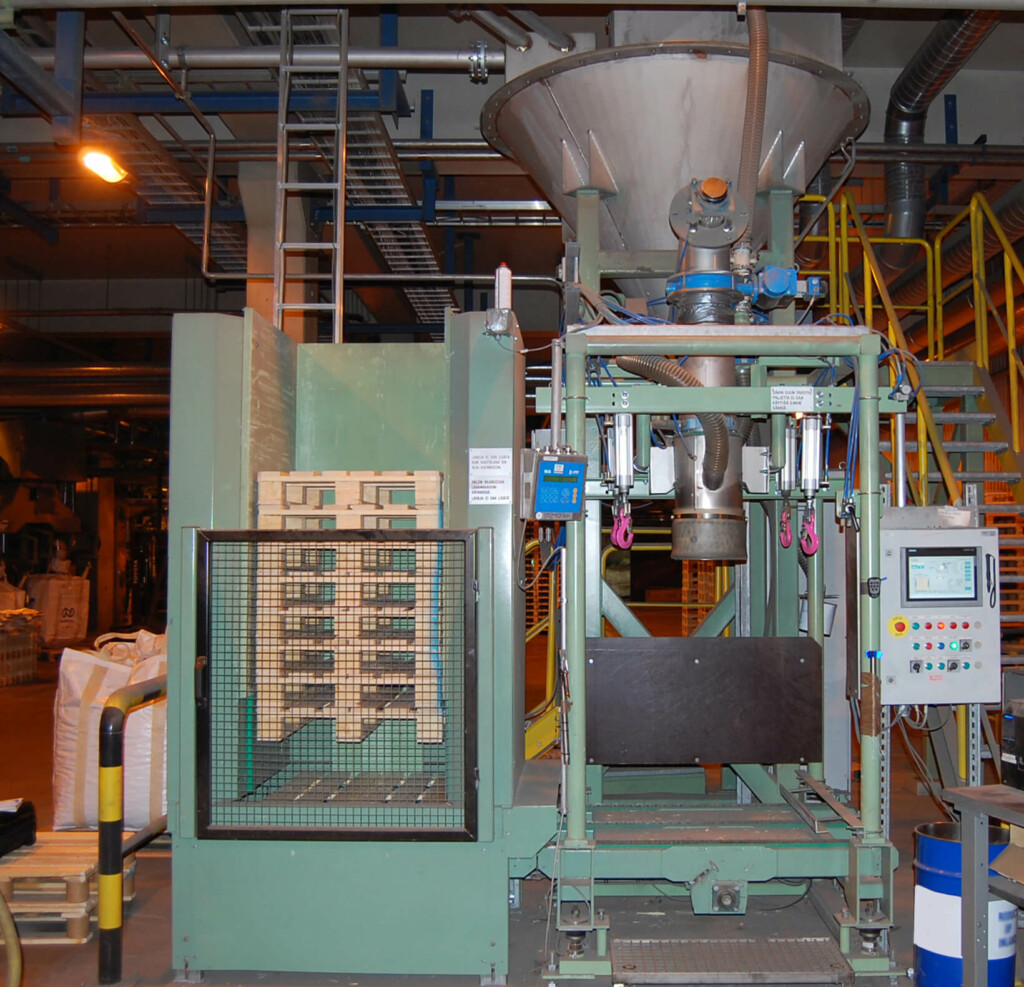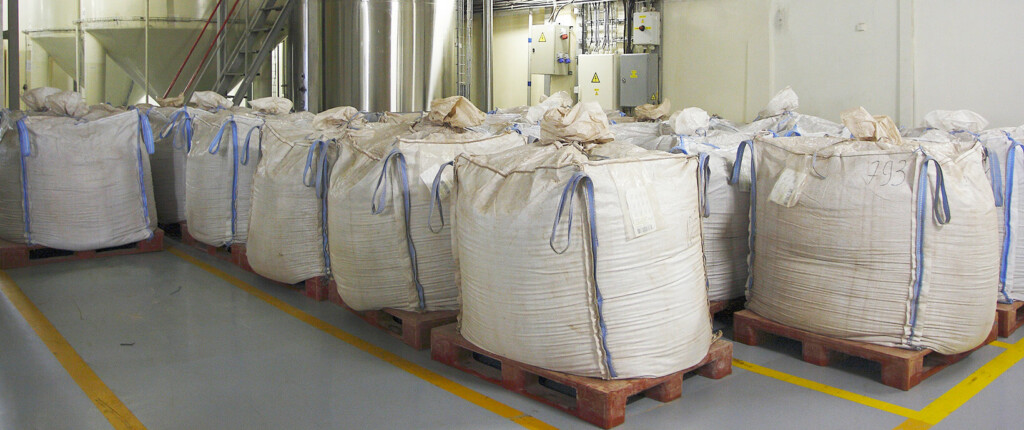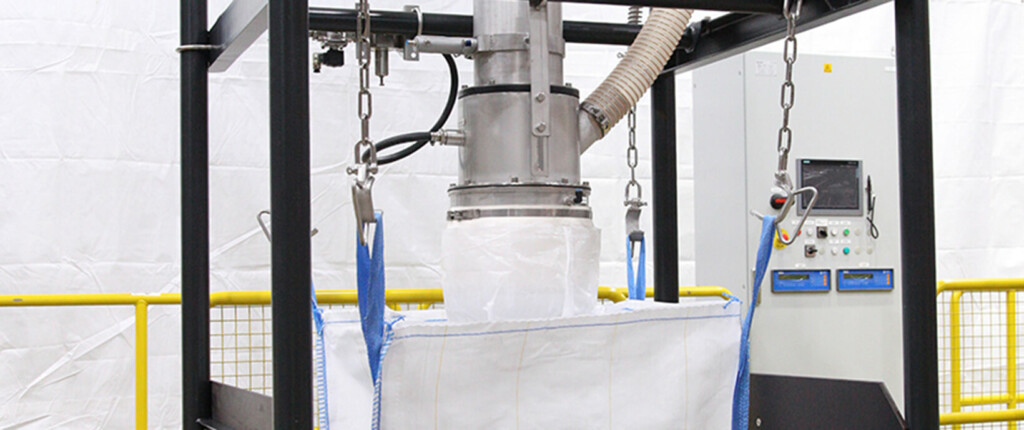Big bagging is a method of handling and transferring materials such as fertilisers, flour, pellets, as well as construction and metal processing products. It is also possible to build a big bag station as a trading tool, which serves as a commercial scale.
If the purchase of a big bagging station could be at hand or its potential seems lucrative, there are a few things to consider before proceeding with the purchase process. Jari Haraholma, experienced sales manager for dosing and weighing systems at Tamtron, explains more about them in his article
It pays to plan big bagging carefully
When planning a new big bagging station, the most important thing to do is to establish the most relevant baseline data. Then Tamtron can recommend th,e type of big bag type and design the mechanical structure of the filling station with its feeding equipment exactly according to the customer’s needs.
In the early stages of design work, the most typical challenge faced by the customer is that the dimensions of all possible bags are not yet known. This means that the designer of the station must have a good understanding of the impact of bag variation on the design of the filling connections. The material to be bagged and its properties need to be known precisely before deciding, for example, on the type of dosing equipment to be used to fill the bags.
In addition, it is important to know in advance the purpose of the bags and the necessary operating principles, i.e. whether they are to be used as outdoor breakable bags, whether they have separate inner bags, what kind of valves they have inside, and whether a feeding collar is to be used with them. Even the smals have a major influence on the technical solutions of the big bagging station

Properties of the bagged material can vary
The big bagging station can bag a wide range of materials from light and fine to coarse and heavy. For example, fluid materials behave differently from other materials, requiring the removal of excess air from the filled sack. Sometimes this type of fine material may also require design measures to keep the bag in shape.
Tamtron also supplies fluidization technology, which precedes large bagging in the process and allows bulk material to be moved in silos and pipes by gravity, like a liquid. As this method does not require motors, energy consumption is significantly reduced and the efficiency of the production process increased. The tightness of the equipment also reduces dust generation, which significantly improves working conditions.

Big bag filling station enables accurate weighing and data management
The weighing of the product and the management of weighing data are always an integral part of bagging. In the case of a bag with a specific weight (e.g., 1000 kg), the customer only pays for that weight. However, if a bag of non-specific weight is used (weighing result, e.g. 996 kg), the buyer adds up the weight results on the weighing receipts and pays for this weighed quantity.
It is also important to discuss how weighing data should be managed and how links to ERP and other systems should be implemented. The type of dosing device and the coarse and fine dosing functions of the dosing control will determine the dosing accuracy of a bulk bagging operation.
The scales used in big bag filling can be connected to Tamtron’s mScales digital weighing service, regardless of the manufacturer. The service can be used to automate and thus streamline many functions, such as inventory balance maintenance, invoicing speed, and material flow management. In addition to the weighing result, the weighing identification data is transferred to the subscriber’s system. The same information is also stored in the dosage controller’s log memory. The automation significantly reduces manual work and minimizes errors.
Commercial or non-commercial scale?
A scale is in commercial use when the weighing result is used to determine the price of a product or service. The design and operation of the scales must meet certain criteria, which are determined by laws, directives, and many other standards.
The design and implementation of automation for a commercial scale is not as straightforward as for a non-commercial scale. In other words, designing a commercial scale requires a completely different level of expertise than a basic process scale in order to meet the legal requirements.

Lifecycle services quarantee long-lasting and reliable weighing solutions for big bagging stations
The reliability and long life cycle of weighing systems is ensured by Tamtron’s maintenance and calibration services. Connecting the scale to Tamtron’s mScales weighing service also enables remote diagnostics.
In addition to periodic inspections of scales, Tamtron performs their initial verification and maintenance. It also carries out maintenance and modernization of old scales. In fact, Tamtron’s rights to carry out inspections based on various metrological standards are more extensive than those of any other operator that offers weighing instrument maintenance in Finland.
Big bagging station is an essential part of the efficiency of the production process
Tamtron’s design work is underpinned by long experience in the behavior of different dry powders at different stages of a production process. Over the years, Tamtron has delivered more than 200 demanding systems handling dozens of different dry powder materials. This experience can also be applied to the dosing and weighing of individual substances.
Dosing and weighing often go hand in hand and the choice of the right dosing method also affects the weighing technology. Consideration and understanding of the properties of the materials being bagged are also essential to building a reliable and accurate production process. To meet these needs, Tamtron has all the necessary experience and expertise, as well as state-of-the-art technical solutions. The company’s large bagging stations always comply with the EU Type Examination Certificate as well as the Machinery Directive, and are CE-marked. Tamtron offers a turnkey service, including everything from design and manufacturing to installation and commissioning.
Guide to designing scales and weighing systems
Our guide provides designers and those responsible for purchasing a weighing system with information and advice on the needs of modern design and how to get the most out of a weighing system to benefit your business.
Tamtron mScales – Digital weighing service
Maximise efficiency of your operations with Tamtron mScales.

Interested in weighing insight?
Subscribe to our newsletter, and you’ll receive an email a few times a year with up-to-date information on weighing and dosing solutions.


